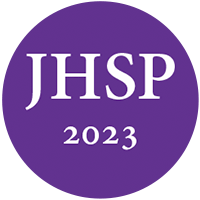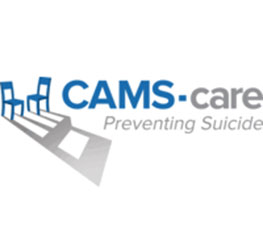Join a community of 10,000 credentialed HSPs.
Learn it today. Apply it tomorrow.
Connecting you to what you need for your career.
Van Buren, B. R., & Liebman, R. E. (2021). Psychological assessment of adult survivors of interpersonal violence: guidelines for trauma-informed evaluation and treatment planning.Journal of Health Service Psychology. https://doi.org/10.1007/s42843-021-00042-5
It is estimated that 50–75% of adults have been exposed to one re more forms of interpersonal violence (IV), defined as violence directed between family members, intimate partners, acquaintances, strangers, or members of a community. IV often involves repeated exposure to traumatic stressors and other forms of adversity, particularly when it is first experienced during childhood. The experience of IV is also associated with negative effects across domains of functioning that can be varied and complex. Accordingly, psychological assessment of IV and its impact will be most beneficial if it is approached multidimensionally and takes into account the diversity of diagnostic categories and psychosocial domains that are impacted by exposure to IV. In this article we provide practical strategies and recommendations for assessing IV and its impact, including guidance on how to conduct a comprehensive assessment with an emphasis on involving clients collaboratively in the process. Specific recommendations are provided for setting the assessment frame, assessing strengths and needs, and providing feedback on results.
Access continuing education course on CE.NationalRegister.org
Bonanno, G. A., & Mancini, A. D. (2012). Beyond resilience and PTSD: Mapping the heterogeneity of responses to potential trauma. Psychological Trauma: Theory, Research, Practice, and Policy, 4(1), 74–83. https://doi.org/10.1037/a0017829
Cerdá, M., DiGangi, J., Galea, S., & Koenen, K. (2012). Epidemiologic research on interpersonal violence and common psychiatric disorders: Where do we go from here? Depression and Anxiety, 29(5), 359–385. https://doi.org/1002/da.21947
Felitti, V. J., & Anda, R. F. (2009). The relationship of adverse childhood experiences to adult medical disease, psychiatric disorders, and sexual behavior: Implications for healthcare. In R. A. Lanius & E. Vermetten (Eds.), The hidden epidemic: The impact of early life trauma on health and disease (pp. 1–23). Cambridge University Press. https://doi.org/10.1017/CBO9780511777042.010
First, M. B., Williams, J. B. W., Karg, R. S., & Spitzer, R. L. (2016). Structured Clinical Interview for DSM-5 Disorders, Clinician Version (SCID-5-CV). American Psychiatric Association.
Hooper, L. M., Stockton, P., Krupnick, J. L., & Green, B. L. (2011). Development, use, and psychometric properties of the Trauma History Questionnaire. Journal of Loss and Trauma, 16, 258–283. https://doi.org/10.1080/15325024.2011.572035
Keane, T. M., Brief, D. J., Pratt, E. M., & Miller, M. W. (2007). Assessment of PTSD and its comorbidities in adults. In M. J. Friedman, T. M. Keane, & P. A. Resick (Eds.), Handbook of PTSD: Science and practice (pp. 279–305). The Guilford Press.
Kessler, R. C., Aguilar-Gaxiola, S., Alonso, J., Benjet, C., Bromet, E. J., Cardoso, G., Degenhart, L., de Girolamo, G., Dinolova, R. V., Ferry, F., Florescu, S., Gurege, O., Haro, J. M., Huang, Y., Karam, E. G., Kawakami, N., Lee, S., Lepine, J., Levinson, D.,…Koenen, K. C. (2017). Trauma and PTSD in the WHO world mental health surveys. European Journal of Psychotraumatology, 8(sup 5), 1353383. https://doi.org/10.1080/2008198.2017.1353383
Kilpatrick, D. G., Resnick, H. S., Milanak, M. E., Miller, M. W., Keyes, K. M., & Friedman, M. J. (2013). National estimates of exposure to traumatic events and PTSD prevalence using DSM-IV and DSM-5 criteria. Journal of Traumatic Stress, 26(5), 537–547. https://doi.org/10.1002/jts.21848
Kisiel, C., Conradi, L., Fehrenbach, T., Torgersen, E., & Briggs, E. C. (2014). Assessing the effects of trauma in children and adolescents in practice settings. Child and Adolescent Psychiatric Clinics of North America, 23(2), 223–242. https://doi.org/10.1016/j.chc.2013.12.007
Layne, C. M., Kaplow, J. B., & Youngstrom, E. A. (2017). Applying evidence-based assessment to childhood trauma and bereavement: Concepts, principles, and practices. In Evidence-based treatments for trauma related disorders in children and adolescents (pp. 67–96). Springer International Publishing. https://doi.org/10.1007/978-3-319-46138-0_4
López-Martínez, A. E., Serrano-Ibáñez, E. R., Ruiz-Párraga, G. T., Gómez-Pérez, L., Ramírez-Maestre, C., & Esteve, R. (2018). Physical Health Consequences of Interpersonal Trauma: A Systematic Review of the Role of Psychological Variables. Trauma, Violence, & Abuse, 19(3), 305–322. https://doi.org/10.1177/1524838016659488
Martin, C. G., DePrince, A. P., Cromer, L. D., & Freyd, J. J. (2013). The role of cumulative trauma, betrayal, and appraisals in understanding trauma symptomatology. Psychological Trauma: Theory, Research, Practice, and Policy, 5(2), 110–118. https://doi.org/10.1037/a0025686
Nader, K. (2007). Culture and the assessment of trauma in youths. In J. P. Wilson & C. S. Tang (Eds.), Cross-cultural assessment of psychological trauma and PTSD. International and cultural psychology series (pp. 169–196). Springer.
Nutton, J., & Fast, E. (2015). Historical trauma, substance use, and indigenous peoples: Seven generations of harm from a “big event.” Substance Use & Misuse, 50(7), 839–847. https://doi.org/3109/10826084.2015.1018755
Read, J., & Fraser, A. (1998). Abuse histories of psychiatric inpatients: To ask or not to ask? Psychiatric Services, 49(3), 355–359. https://doi.org/10.1176/ps.49.3.355
Sheehan, D. V., Lecrubier, Y., Sheehan, K. H., Amorim, P., Janavs, J., Weiller, E., Hergueta, T., Baker, R., & Dunbar, G. C. (1998). The Mini-International Neuropsychiatric Interview (M.I.N.I): The development and validation of a structured diagnostic psychiatric interview for DSM-IV and ICD-10. Journal of Clinical Psychiatry, 59(suppl. 20), 22–33.
Teaster, P. B. (2017). A framework for polyvictimization in later life. Journal of Elder Abuse and Neglect, 29(5), 289–298. https://doi.org/10.1080/08946566.2017.1375444
Ungar, M. (2015). Practitioner review: Diagnosing childhood resilience – A systemic approach to the diagnosis of adaptation in adverse social and physical ecologies. Journal of Child Psychology and Psychiatry and Allied Disciplines, 56(1), 4–17. https://doi.org/10.1111/jcpp.12306
Weathers, F. W., Blake, D. D., Schnurr, P. P., Kaloupek, D. G., Marx, B. P., & Keane, T. M. (2013a). The Clinician-Administered PTSD Scale for DSM-5 (CAPS-5). National Center for PTSD.
Weathers, F.W., Blake, D. D., Schnurr, P. P., Kaloupek, D. G., Marx, B. P., & Keane, T. M. (2013b). The Life Events Checklist for DSM-5 (LEC-5). National Center for PTSD.
World Health Organization. (n.d.). Definition and typology of violence. https://www.who.int/violenceprevention/approach/definition/en/
Copyright © 2024 All rights reserved. National Register of Health Service Psychologists









